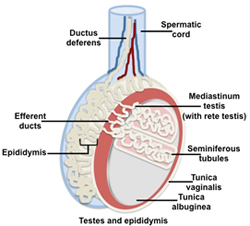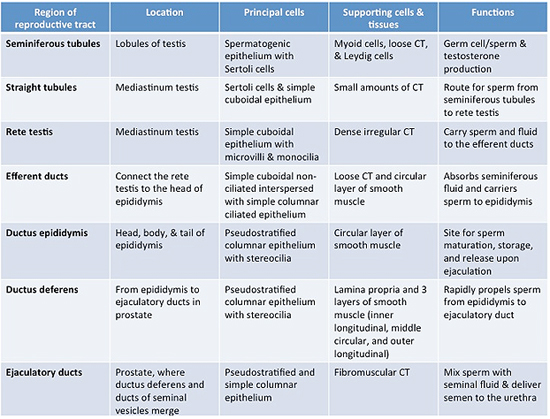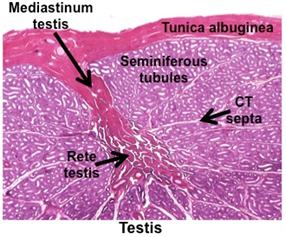|
 The testis is the site where
spermatogenesis and spermiogenesis occur within the seminiferous
tubules, giving rise to haploid gametes with the morphological
features necessary for fertilization. The testis also produces
testosterone, which is essential for sperm production and
development and maintenance of secondary sex characteristics. The testis is the site where
spermatogenesis and spermiogenesis occur within the seminiferous
tubules, giving rise to haploid gametes with the morphological
features necessary for fertilization. The testis also produces
testosterone, which is essential for sperm production and
development and maintenance of secondary sex characteristics.
Sperm travel through intratesticular
ducts (straight tubules and rete testis) and then into the
epididymis where they further mature (e.g. becoming
decapacitated and acquiring the ability to swim) and are stored
until they are ejaculated. During ejaculation they travel into the
ductus deferens, ejaculatory duct, prostatic urethra, and then exit
the body through the penile urethra.
Study the table and diagram of the
testes, epididymis, and ductus deferens, noting
their locations, features, and functions for correlation with the
slides we’ll study in this unit.

 Examine this
trichrome-stained section of
testis at low
magnification. Identify the following structures: Examine this
trichrome-stained section of
testis at low
magnification. Identify the following structures:
- Capsule (tunica albuginea)
- Mediastinum testis
- Rete testis
- Connective tissue
septa
- Seminiferous tubules.
More about the
testis. |